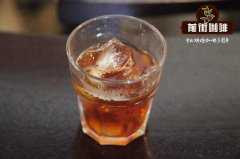The History and characteristics of Iron pickup
Iron pickup is delicate, vulnerable to rust (a common coffee disease), less yield, but excellent flavor, is one of the best boutique coffee beans. Their descendants also shine in the coffee industry, with the famous "one king and one queen"-the Blue Mountains of Jamaica and Kona of Hawaii, variants of iron pickups.
Typica has distinct characteristics, and it is probably the most easily identified variety. These plants are conical, with main vertical trunks up to 5 meters high. This height means that the distance between branches and nodes on the same branch of Typica is longer than that of other varieties.
The lateral branches form an angle of 50 to 80 °with the vertical trunk. The trunk and branches are not very strong. Leaves, fruits and raw beans are usually slender, and the bud tips of young leaves are bronze.
Compared with other Arabica varieties, Typica has smoother leaf surfaces and fewer wavy boundaries. The typical Typica fruit is bright red when it ripens.
The history of the discovery of iron pickups:
Tieka coffee was first grown commercially because of the Dutch obsession with coffee. In the early days when there was a boycott of coffee in Europe, the Dutch already wanted to grow coffee in order to carry out global trade.
(coffee beans from Central and South America)
But the Dutch did not understand that coffee was a tropical crop that could not stand the cold, so it was not until the Dutch East India Company planted the coffee tree in the greenhouse in 1616 that the coffee tree was successfully transplanted and became the "mother coffee tree".
The expansion history of iron pickup:
After getting the coffee mother tree, the Dutch then planted coffee in Sri Lanka and India, but the local people were not enthusiastic about coffee and there was a large-scale outbreak of leaf rust, which reduced the production of local coffee in India. so it was transplanted to Indonesia.
Then the Dutch gave the coffee mother tree to the French, and after a lot of hardships, the French planted iron pickup coffee in South and Central America, and then Colombia, Costa Rica, Mexico and Brazil all competed to grow iron pickup coffee.
Characteristics of iron pickup coffee tree species:
(the top leaf of the iron pickup is red)
The bronze color of the top leaf of the iron pickup is one of the characteristics, with large beans, pointed oval or thin pointed shape, and some people call it "red top coffee". Iron pickup coffee has its unique quiet and clean flavor, as well as balanced features, high cleanliness, but the only drawback is insufficient production, altitude requirements, at the same time easy to infection with leaf rust, and resistance to diseases and insect pests is not strong.
A variety of Tippica coffee:
After a long time and the baptism of the characteristics of various producing areas, there are many varieties of iron pickup coffee, the most famous of which is Blue Mountain Coffee and Kona Coffee. At the same time, according to the latest DNA test report, Kenya's SL28, originally a bourbon tree, is actually a tin pickup tree.
Important Notice :
前街咖啡 FrontStreet Coffee has moved to new addredd:
FrontStreet Coffee Address: 315,Donghua East Road,GuangZhou
Tel:020 38364473
- Prev

Introduction to the flavor characteristics of coffee beans by carbon dioxide impregnation how to treat coffee red wine by CM
Professional coffee knowledge exchange more coffee bean information please follow the coffee workshop (Wechat official account cafe_style) before LuisCompos founded his own company CordilleradeFuego, he was already in Costa Rica's famous coffee company CafdeAlt
- Next

Blue Mountain Coffee Baking Curve roasting skills Blue Mountain Coffee Fire Enhancement effect is Blue Mountain Coffee delicious
Professional coffee knowledge exchange more coffee bean information please follow the coffee workshop (Wechat official account cafe_style)
Related
- Detailed explanation of Jadeite planting Land in Panamanian Jadeite Manor introduction to the grading system of Jadeite competitive bidding, Red bid, Green bid and Rose Summer
- Story of Coffee planting in Brenka region of Costa Rica Stonehenge Manor anaerobic heavy honey treatment of flavor mouth
- What's on the barrel of Blue Mountain Coffee beans?
- Can American coffee also pull flowers? How to use hot American style to pull out a good-looking pattern?
- Can you make a cold extract with coffee beans? What is the right proportion for cold-extracted coffee formula?
- Indonesian PWN Gold Mandrine Coffee Origin Features Flavor How to Chong? Mandolin coffee is American.
- A brief introduction to the flavor characteristics of Brazilian yellow bourbon coffee beans
- What is the effect of different water quality on the flavor of cold-extracted coffee? What kind of water is best for brewing coffee?
- Why do you think of Rose Summer whenever you mention Panamanian coffee?
- Introduction to the characteristics of authentic blue mountain coffee bean producing areas? What is the CIB Coffee Authority in Jamaica?

